081112_Rhinoscript Workshop (McNeel Europe)

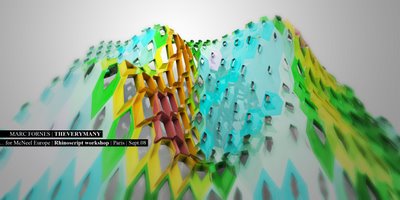
Due to current teaching positions on both sides of the Atlantic (Columbia University in New York and Die Angewandte in Vienna) – I happen to recently develop the highly specific skills of low end jetsetters: deploying a standard 15” screen laptop in any squeezed space airlines! I am talking here about those ones that obviously based on your financial contribution are pushing to the extreme the basic space efficiency algorithm by taking to new levels the competition of packing the maximum seats in the same exact airplane than everybody else – one can argue fair split? Yes! Though in the case of someone attempting to work it generates an inverse relation between the angle of the sit in front of you and the orientation of your screen (supposedly normal to your eye sight) – add to the conflict of the necessary elbow angle to access the touch pad and the comfort of your side neighbor…
Anyway based on those parameters - which obviously have two solutions: afford other airlines or simply buying a 13” laptop! - I recently surprised myself producing quick renderings as a third solution to the equation: enjoying back in my seat the advantage of performative computing! you don't have to focus on your screen while processing is taking care of your render!...
Anecdote aside – Since I didn't post for a little while now (btw sign of production!) - I thought I would upload my first ever renders in a plane! I can only agree not the best ones - but those were done leaving Paris last September after providing for McNeel Europe a two days Rhinoscript workshop for professionals…
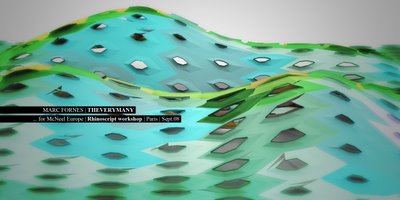
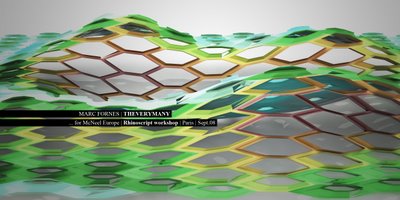
Within this two days workshop the students were introduced to Rhinoscripting through the basics of "building up": from points to curves, from curves to surfaces, and from surface back to extract curves, etc... while on the same time gaining some syntax knowledge it allows to cover in a short period of time some simple patterning (dia-grid, honeycombs), tessellation (non air-tight planar quads) and finally some highly requested components – or basically an introduction toward topology and production of similarity on host surfaces...
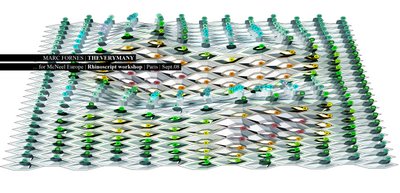
Depending on the level – and as a conclusion during the last hour - I tend to introduce the relation between parameters and information (obvious path toward environmental feedback) such a simple possible correlation between a imported direction and the orientation of component, inverse related size of aperture and color coding...
Here are the very modest results of such a workshop - no pretention what so ever - few faces missing here and there! – but simply an introduction to a path going away from render maps and shaders toward the actual informed control of geometry…
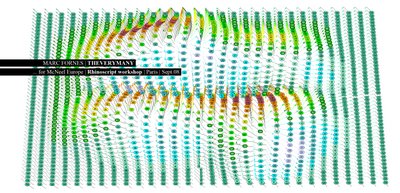
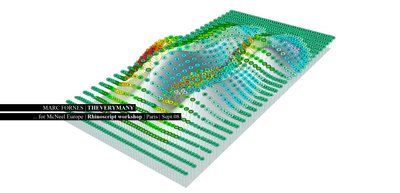
Hopefully a small step toward globalization of environmental feedback into the design process? At least many offices pretends to – yet from my experience too often only beautiful colored diagrams for conferences or justification for excessive patterning – but yes like my plane story at the beginning: performance and confort - it all depends on how much you are ready to endure if not willing to pay...
Labels: marc fornes, McNeel, rhino, Rhinoceros, rhinoscript, rhinoscripting
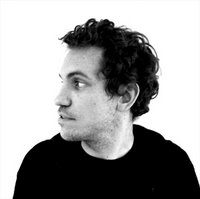

<< Home